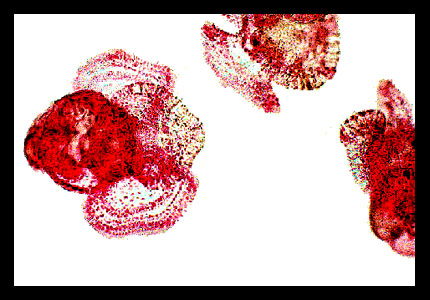
Reproduction
Land snails like the Fumonelix jonesiana are monoecious, meaning they have two sets of sex organs, both male and female (Dourson, 2006). These organs include ovaries, oviducts, eggs, testes, penises, and sperm (Dourson, 2006). Fumonelix jonesiana has a cylindrical or club-shaped penis (Pilsbry, 1940). These hermaphroditic organisms possess a pouch, usually termed a seminal receptacle, to hold a supply of sperm from another snail (Dourson, 2006). Self-fertilization is possible on rare occasion, but usually does not occur (Dourson, 2006). Fertilization is usually internal and sperm is transferred in packets, known as spermatophores (Hickman et al., 2009). This method of transfer prevents self-fertilization when two individuals mate (Hickman et al., 2009).
Eggs are laid in a variety of moist environments (Dourson, 2006). Eggs can be found on the underside of logs or also on the forest floor underneath dense leaf debris (Dourson, 2006). Eggs can be laid in holes or burrows in the ground (Hickman et al., 2009). Gastropods go through direct development which means that when they hatch they grow straight into an adult snail(Hickman et al., 2009). In the egg, before they hatch, Fumonelix jonesiana has a trochophore larvae stage followed by a veliger larvae stage. (Hickman et al., 2009). Veliger larvae show the beginning developments of their foot, shell, and mantle (Hickman et al., 2009). During the veliger stage, the organism undergoes a process known as torsion, which places the mantle cavity and anus in close proximity to the head and gills (Hickman et al., 2009).
Now that you have learned all about the reproduction of Fumonelix jonesiana, go to the next page to learn more about its interactions with other species.
